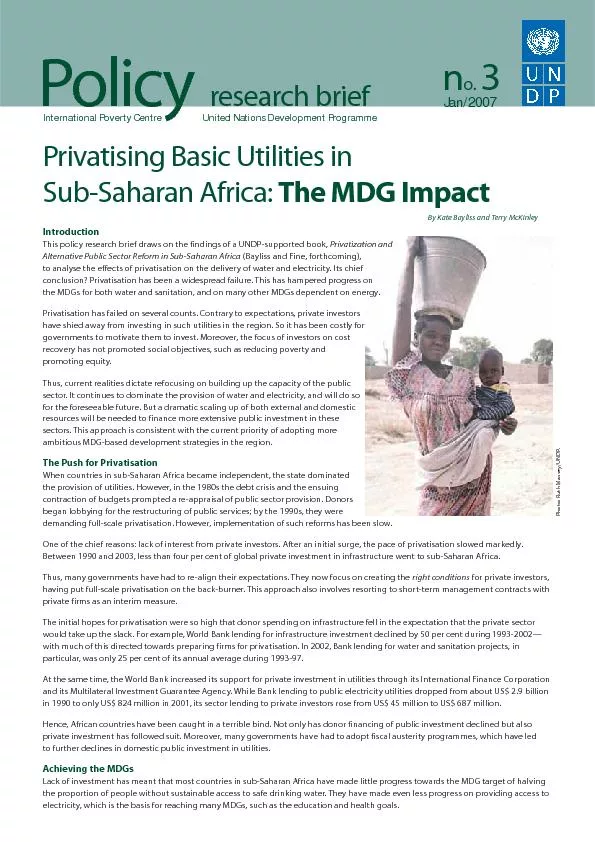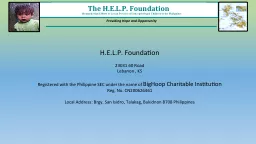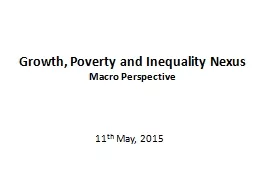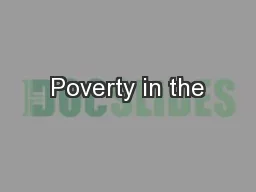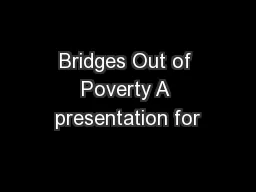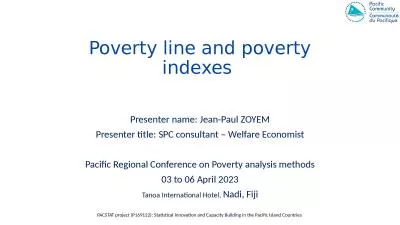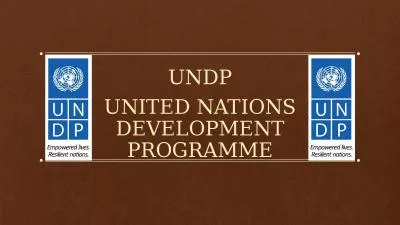PDF-PolicyInternational Poverty Centreresearch briefUnited Nations Develop
Author : luanne-stotts | Published Date : 2017-03-08
Photo Ruth MasseyUNDPIntroductionThis policy research brief draws on the findings of a UNDPsupported book Privatization andAlternative Public Sector Reform in SubSaharan
Presentation Embed Code
Download Presentation
Download Presentation The PPT/PDF document "PolicyInternational Poverty Centreresear..." is the property of its rightful owner. Permission is granted to download and print the materials on this website for personal, non-commercial use only, and to display it on your personal computer provided you do not modify the materials and that you retain all copyright notices contained in the materials. By downloading content from our website, you accept the terms of this agreement.
PolicyInternational Poverty Centreresearch briefUnited Nations Develop: Transcript
Download Rules Of Document
"PolicyInternational Poverty Centreresearch briefUnited Nations Develop"The content belongs to its owner. You may download and print it for personal use, without modification, and keep all copyright notices. By downloading, you agree to these terms.
Related Documents

